If I had a dollar for every time I said “Dude, you had to have been there, that stunt was epic!,” I’d have, well, about $1, because let’s face it, I’m not very adventurous. However, if I were one of those adrenaline seekers, there would be only one camera on my wishlist. I recently had the opportunity to take the Oregon Scientific ATC Chameleon action camera out for a spin.
This unique camera has two, count ’em, two lenses. You’re able to film a first-person view as well as a secondary angle. Each lens shoots in 720p and has a 170° field of view for optimal viewing capabilities. Also, each lens can rotate 180° in order to get just the right shot. One lens tilts vertically while the other pans horizontally. These two videos are processed together and the end result is a split screen video including both angles. A great use of the camera would be to mount it on the front of a kayak with one view facing towards the oncoming rapids with the rear camera tilted up at the rower’s face. Another use would be during a bicycle race to see racers in front and racers in back of the camera. Pretty useful, huh?
Let’s go into specifics on this multi-tasking action cam.
Hardware
The Oregon Scientific ATC Chameleon is a torpedo-shaped device with one video lens at each end. There’s a fool-proof slide button on the top of the camera that’s used for, you guessed it, turning the recording feature on and off. It’s also used to turn the camera on when it’s plugged into your computer so that the micro SD card inside is recognized.
On one side of the camera, there’s a door that hides some important items. Inside the very sturdy door lies the micro SD card slot, the USB jack, a camera status button, as well as a switch where you can choose whether to record your two camera views horizontally or vertically. I chose to record horizontally because that seemed more YouTube-friendly. I mentioned the fact that the door is sturdy because it really is. It’s about a quarter of an inch thick and has a rubberized gasket on the inside that nicely hugs the ports and switches inside when closed. I would not be afraid of any water or sand getting in there during normal use.
The bottom of the camera is where you’ll find the mounting connections, unsurprisingly. Connected to the camera with two removable screws is a V-clip mount. This easily connects to the included ATC mount or the also included vented helmet mount. I used the vented helmet mount during my ski trip and once I figured out how to strap the mount to the helmet, it was very easy. Once the straps are fastened to the helmet, you just clip the camera into the mount and you’re ready to shoot. To remove the camera from the mount, you just pinch the V-clip and slide the camera off the mount.
The camera’s internal battery can last 2 hours on a charge, which should be plenty for most uses. As for memory, the microSD port accepts a 32GB card, which should be enough to capture 2 hours of split screen video. Oregon Scientific claims that the camera is splashproof, though I was not able to test this. A waterproof housing is available however, if you’re thinking of using it on your kayak or surfboard.
My biggest complaint with this camera is the lack of LCD screen. While I was on the mountain, I was terrified. Not that I would fall and tumble down the mountain like some slapstick comedian, but that I wouldn’t get a decent sample shot on the camera for you all. Everything turned out alright, thankfully, but it would have eased much of my worrying if there was a small LCD screen where I could review the footage and verify that my angles were lined up properly. The fact that both lenses can be panned and tilted individually makes this feature even more important, in my mind.
My only other complaint is that the camera sits a little too high off of the helmet. I know that most action cameras do the same, but I would love to see a camera with a lower profile that’s a little less noticeable.
Software
Once you download the Chameleon software from Oregon Scientific, you’re able to do a few neat tricks with the video that you wouldn’t be able to do very easily with other video programs out there. Truth be told, it’s not the easiest software to work with, but it’s not terribly confusing, either. The instructions tell you that before you use the camera, you need to set the date and time by plugging the camera into your computer via the included USB cable and set the date and time through the software. Well, the software never officially detected my camera. However, I was still able to grab the videos off of my camera and play/edit them in the software, so it all worked out.
Once you have your videos uploaded to your computer, you can use the software to view the video you recorded. One of the options is to watch the video showing only one of the views that were filmed. You can also view a picture-in-picture video with one of the videos taking up the entire screen and the other in a small window in the corner. Unfortunately, there are no options to save the videos in these different modes. The original video file will always remain the split screen version.
Video Output
As I mentioned earlier, Oregon Scientific claims that each lens captures video at 720p, and the raw video confirms it. The side-by-side video is a great way to see backwards and forwards at the same time. However, if you only need the front facing view, you’re able to just watch that video on its own. The audio also sounds very good, although we all know that these cameras were built for video first and audio second. One item to note on the audio is that I noticed a lot of wind noise in the downhill videos I shot. You’ll see what I mean in the sample video below.
The best way to judge video quality is to see it for yourself, am I right? Check out the video sample below that I captured at Camelback Mountain, in Tannersville, PA. These videos were not enhanced with any video software, I only added transitions between the different videos that were taken. Disclaimer: I do not pretend to be a professional skier.
Wrap-up
Overall, I think the ATC Chameleon is a great example of how technology can be used to enhance our enjoyment of the outdoors. The camera performs very well and the multiple lenses means you can always adjust your viewpoint. The many mounting accessories means that this camera can be used for all sorts of activities, which only adds to the appeal. The dual lenses, along with the 720p quality of the video produces a great finished result without any fancy editing software or knowledge. I would highly recommend this camera.
You can learn more about the ATC Chameleon here. You can purchase it here in our Amazon Affiliate Store.
MSRP: $199.99
What I like: Side-by-Side views is a great way to relive a great stunt. Ability to store 32GB of video and run 2 hours on a charge give this camera great lasting power. The camera is splash proof, so you don’t need to baby it. Many accessories available for different types of action.
What Needs Improvement: The addition of an LCD screen would go far. Software could use more functions, including a way to save the videos using just one view or in the picture-in-picture mode.
Source: Manufacturer Supplied Sample
Check out the gallery below for more pictures of the ATC Chameleon.

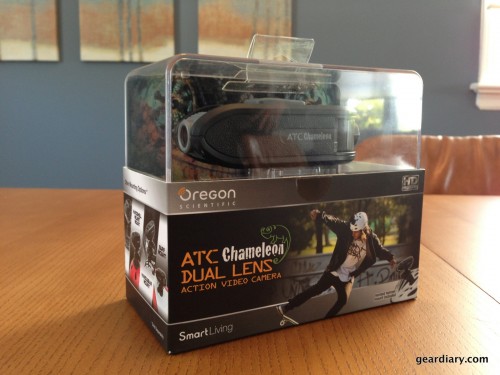
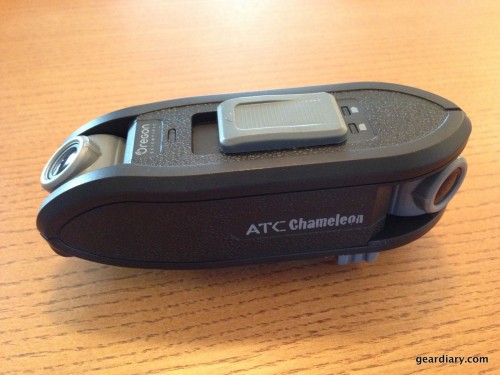
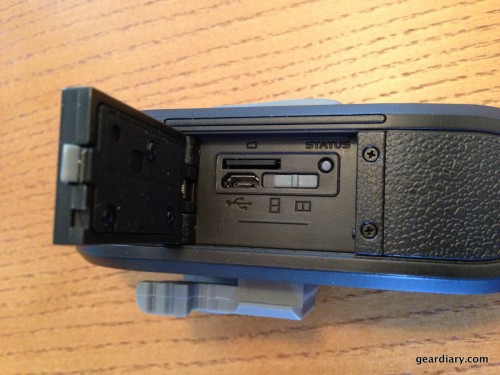
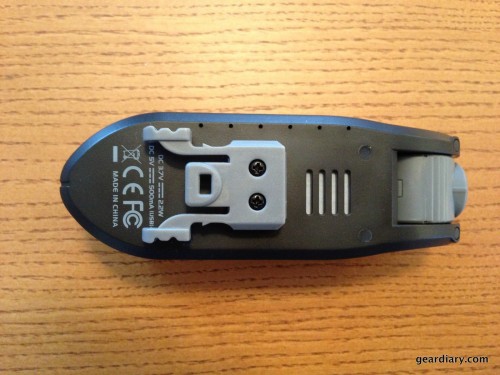
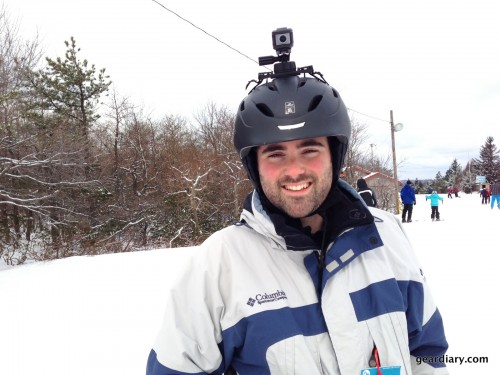
Very cool. Been thinking of a Go Pro for a couple little projects. Or a Lookcie.